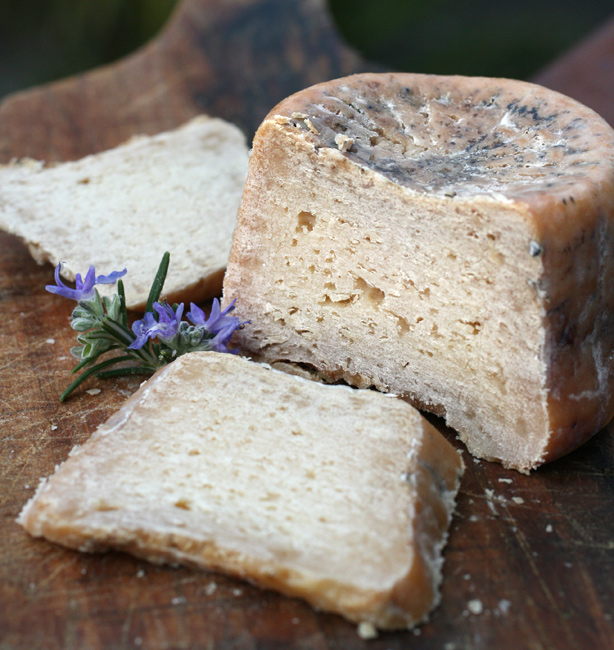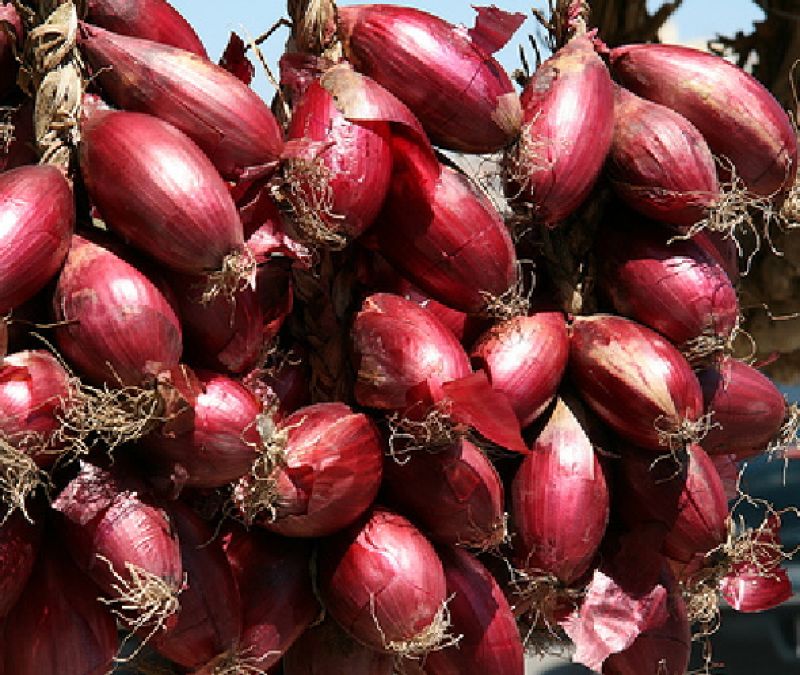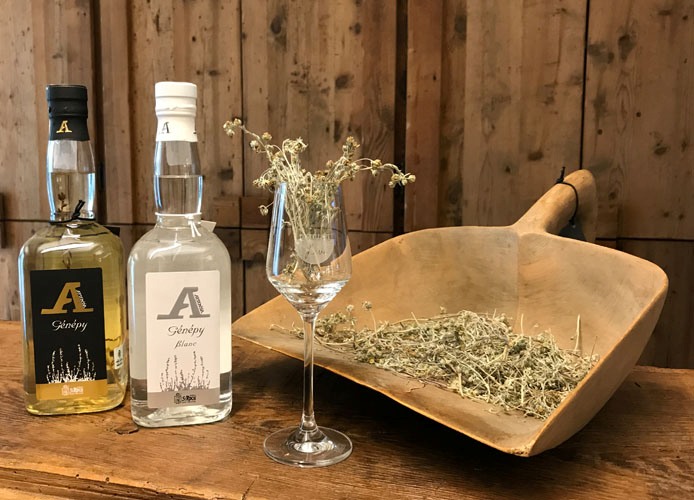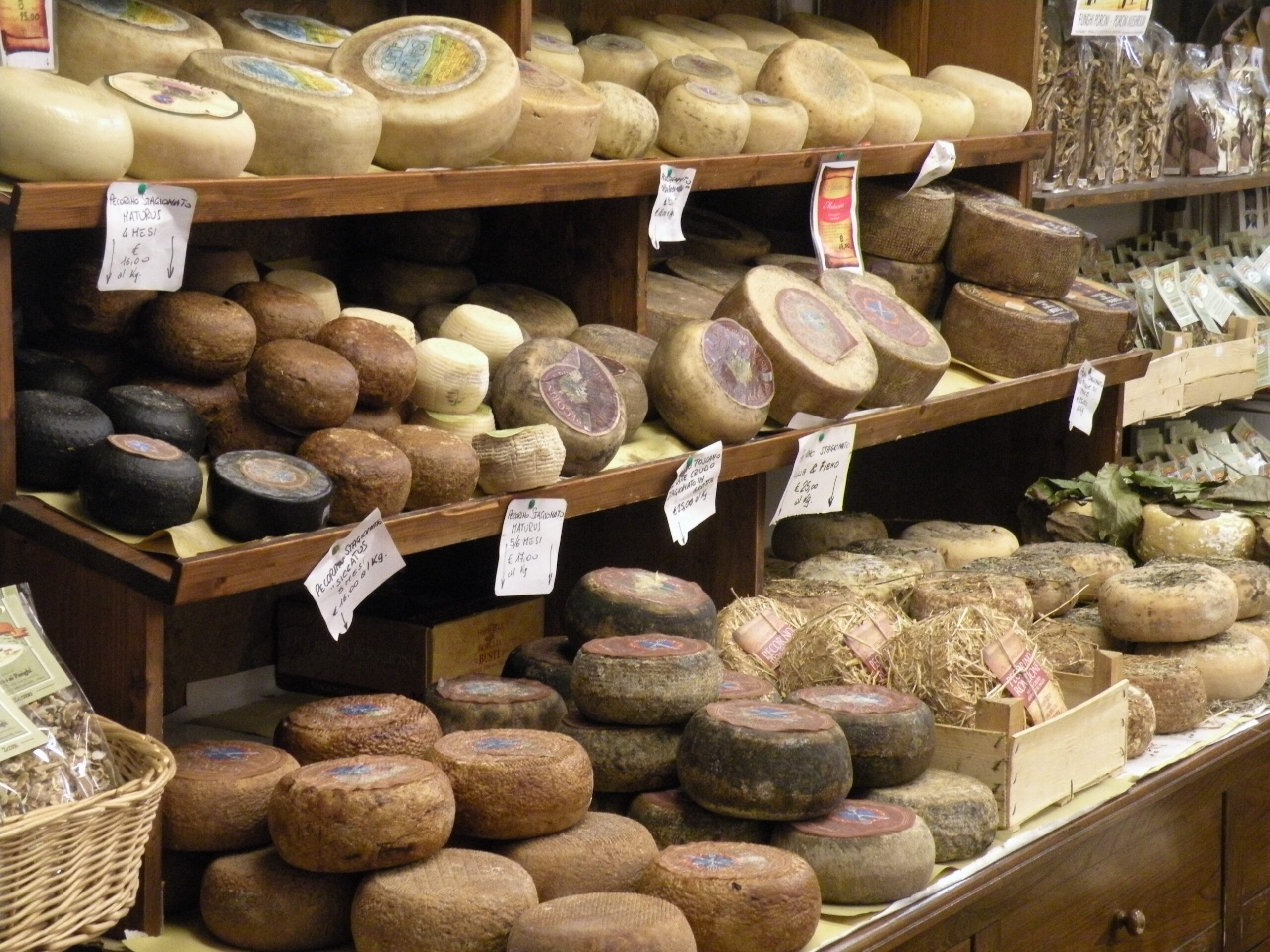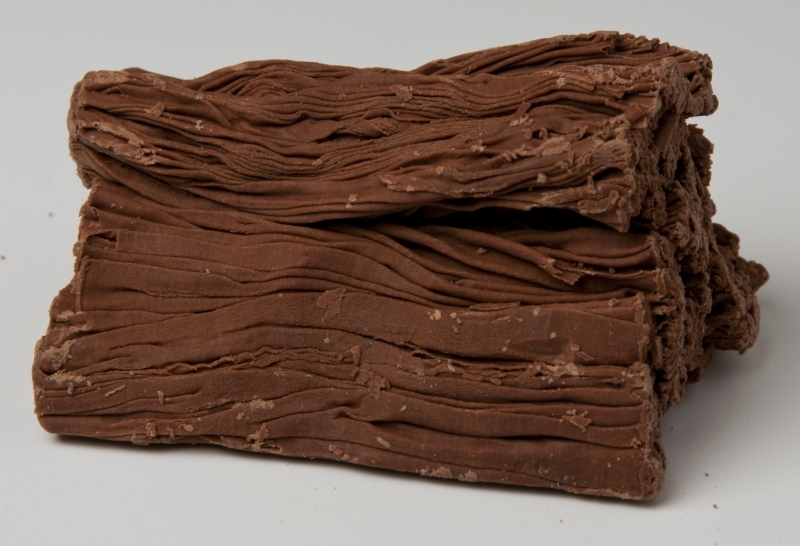Casoperuto is an ancient sheep and goat cheese from the province of Caserta, typical of the area bordering with Molise and lower Lazio, between Sessa Aurunca and San Pietro Infine, an area characterized by an ancient pastoral tradition.
Casoperuto means "lost cheese": if well seasoned, it emanates in fact a penetrating smell of mold and appears a bit wrinkled. The particular type of processing, based on the use of vegetable rennet obtained from the flowers of milk thistle (Cynaria cardunculus), the curing with pimpinella, wild thyme, and the aging in terracotta pots, give this cheese a penetrating flavor, strong and unusual, as ancient as its origins. It is made from raw, filtered goat and sheep’s milk, coagulated with rennet obtained from thistle flowers gathered in the summer from mountain pastures. The curd is broken up finely, left to settle on the bottom of the cauldron and placed in wicker or, today, plastic baskets, 10-12 centimeters in diameter. After a few hours, the forms are salted and left to dry on wooden boards, so that they expel the whey; once dry, they are washed with the cooking water of homemade pasta (the "pettole"), dried and treated on the surface with white wine vinegar and olive oil and, finally, sprinkled with dried pimpinella and placed in hermetically sealed terracotta jars. The casoperuto has a rustic, ancestral appearance: on the surface it is an intense straw-yellow color, completely covered with pimpinella; the paste is white, tending to straw-yellow, with a tender and homogeneous consistency, exuding a penetrating and characteristic aroma; the flavor, intense and aromatic, gives an uncommon sensory balance. The wheels weigh from 250 to 400 grams.
